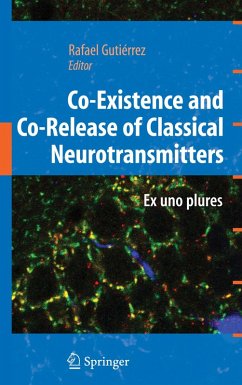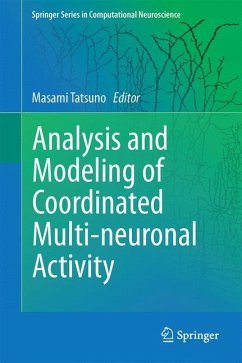
The Sticky Synapse (eBook, PDF)
Cell Adhesion Molecules and Their Role in Synapse Formation and Maintenance
Redaktion: Hortsch, Michael; Umemori, Hisashi
Versandkostenfrei!
Sofort per Download lieferbar
128,95 €
inkl. MwSt.
Weitere Ausgaben:

PAYBACK Punkte
64 °P sammeln!
The molecular mechanisms, which are responsible for the functional differences between the various types of neuronal synapses, have become one of the central themes of modern neurobiology. It is becoming increasingly clear that a misregulation of synaptogenesis and synaptic remodeling and dysfunctional neuronal synapses are at the heart of several human diseases, both neurological disorders and psychiatric conditions. As synapses present specialized cellular junctions between neurons and their target cells, it may not come as a surprise that neural cell adhesion molecules (CAMs) are of special...
The molecular mechanisms, which are responsible for the functional differences between the various types of neuronal synapses, have become one of the central themes of modern neurobiology. It is becoming increasingly clear that a misregulation of synaptogenesis and synaptic remodeling and dysfunctional neuronal synapses are at the heart of several human diseases, both neurological disorders and psychiatric conditions. As synapses present specialized cellular junctions between neurons and their target cells, it may not come as a surprise that neural cell adhesion molecules (CAMs) are of special importance for the genesis and the maintenance of synaptic connections. Genes encoding adhesive molecules make up a significant portion of the human genome, and neural CAMs even have been postulated to be a major factor in the evolution of the human brain. These are just some of the many reasons why we thought a book on neural CAMs and their role in establishing and maintaining neuronal synapses would be highly appropriate for summarizing our current state of knowledge. Without question, over the near future, additional adhesive proteins will join the ranks of synaptic CAMs and our knowledge, and how these molecules enable neurons and their targets to communicate effectively will grow.
Dieser Download kann aus rechtlichen Gründen nur mit Rechnungsadresse in A, B, BG, CY, CZ, D, DK, EW, E, FIN, F, GR, HR, H, IRL, I, LT, L, LR, M, NL, PL, P, R, S, SLO, SK ausgeliefert werden.













